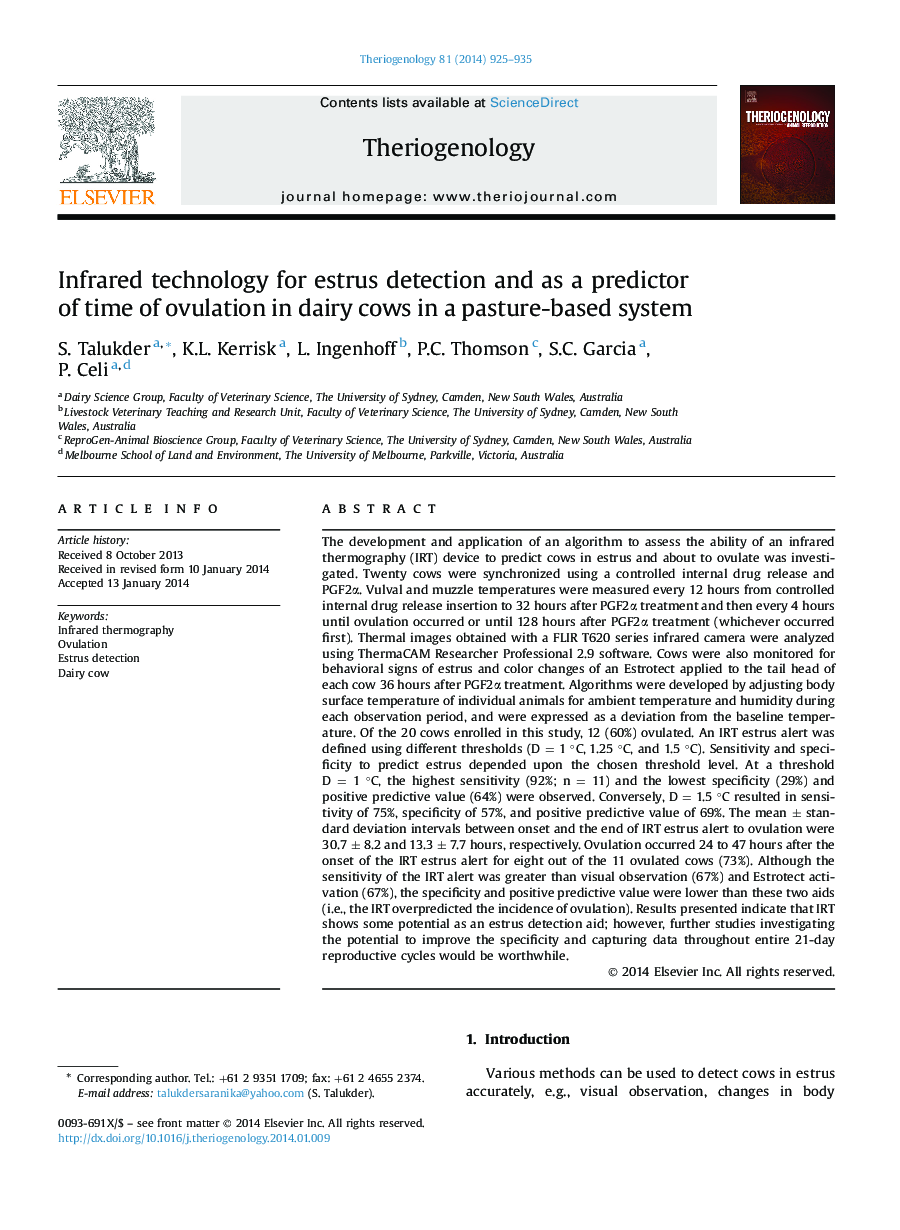| کد مقاله | کد نشریه | سال انتشار | مقاله انگلیسی | نسخه تمام متن |
|---|---|---|---|---|
| 2095143 | 1082077 | 2014 | 11 صفحه PDF | دانلود رایگان |
The development and application of an algorithm to assess the ability of an infrared thermography (IRT) device to predict cows in estrus and about to ovulate was investigated. Twenty cows were synchronized using a controlled internal drug release and PGF2α. Vulval and muzzle temperatures were measured every 12 hours from controlled internal drug release insertion to 32 hours after PGF2α treatment and then every 4 hours until ovulation occurred or until 128 hours after PGF2α treatment (whichever occurred first). Thermal images obtained with a FLIR T620 series infrared camera were analyzed using ThermaCAM Researcher Professional 2.9 software. Cows were also monitored for behavioral signs of estrus and color changes of an Estrotect applied to the tail head of each cow 36 hours after PGF2α treatment. Algorithms were developed by adjusting body surface temperature of individual animals for ambient temperature and humidity during each observation period, and were expressed as a deviation from the baseline temperature. Of the 20 cows enrolled in this study, 12 (60%) ovulated. An IRT estrus alert was defined using different thresholds (D = 1 °C, 1.25 °C, and 1.5 °C). Sensitivity and specificity to predict estrus depended upon the chosen threshold level. At a threshold D = 1 °C, the highest sensitivity (92%; n = 11) and the lowest specificity (29%) and positive predictive value (64%) were observed. Conversely, D = 1.5 °C resulted in sensitivity of 75%, specificity of 57%, and positive predictive value of 69%. The mean ± standard deviation intervals between onset and the end of IRT estrus alert to ovulation were 30.7 ± 8.2 and 13.3 ± 7.7 hours, respectively. Ovulation occurred 24 to 47 hours after the onset of the IRT estrus alert for eight out of the 11 ovulated cows (73%). Although the sensitivity of the IRT alert was greater than visual observation (67%) and Estrotect activation (67%), the specificity and positive predictive value were lower than these two aids (i.e., the IRT overpredicted the incidence of ovulation). Results presented indicate that IRT shows some potential as an estrus detection aid; however, further studies investigating the potential to improve the specificity and capturing data throughout entire 21-day reproductive cycles would be worthwhile.
Journal: Theriogenology - Volume 81, Issue 7, 15 April 2014, Pages 925–935
